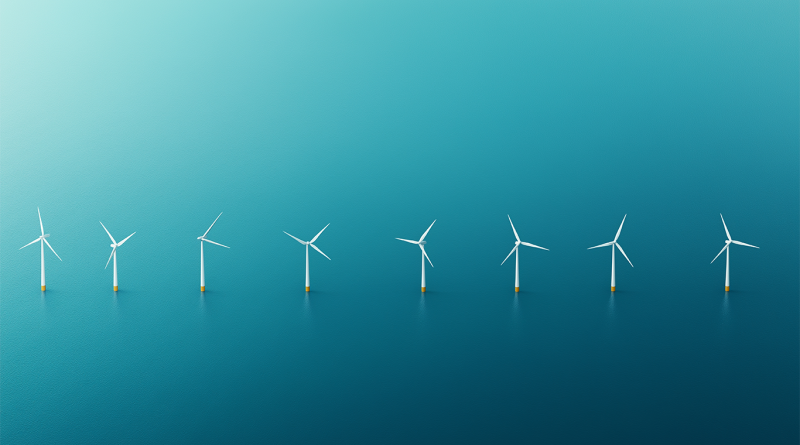How the $54 Billion Offshore EPC Market is Set to Expand in 2025
The offshore oil and gas industry is gearing up for a significant expansion in 2025, driven by a $54 billion wave of engineering, procurement, and construction (EPC) opportunities. This surge is fueled by rising energy demand, strategic investments in untapped reserves, and advancements in technology that are transforming the way projects are executed. With major players like Saudi Aramco, Petrobras, and ADNOC at the forefront, the global EPC market is poised for robust growth that spans multiple regions and project types.
Reviewing the $54 billion EPC opportunities for 2025
The $54 billion investment pipeline for 2025 offers a diverse range of opportunities for EPC companies, spanning from large-scale offshore production facilities to cutting-edge subsea technologies.
Breakdown of regional investments:
Middle East: The Middle East remains a dominant force, with nations like Saudi Arabia and the UAE leading efforts to ramp up offshore production. Projects in the Arabian Gulf are set to include new offshore platforms and enhanced oil recovery systems aimed at maximizing output from mature fields.
Africa: Offshore opportunities in Africa, particularly in Nigeria and Angola, are growing due to the region’s abundant deepwater reserves. Mozambique is also attracting attention with its emerging liquefied natural gas (LNG) infrastructure and offshore exploration projects.
South America: Brazil’s pre-salt oil fields are driving the region’s offshore investments, with Petrobras leading the charge in floating production storage and offloading (FPSO) units and subsea infrastructure.
Asia-Pacific: Countries like Indonesia, Malaysia, and India are investing in offshore developments to boost energy independence, with shallow-water projects and subsea advancements taking priority.
North America: The Gulf of Mexico remains a cornerstone of offshore energy in the US, where drilling activity is expected to rebound thanks to regulatory clarity and renewed operator confidence.
Types of projects:
The investments will span a wide array of EPC projects, including:
Floating Production Storage and Offloading (FPSO) Units: Key to deepwater operations, FPSOs are central to offshore production strategies, particularly in South America and Africa.
Subsea Production Systems: Advanced subsea technologies are driving increased efficiencies and enabling operations in ultra-deepwater environments.
Offshore Pipelines: Extensive pipeline networks are planned to connect offshore fields with onshore processing facilities, ensuring seamless transportation of oil and gas.
Renewable Integration: Hybrid offshore platforms that combine oil and gas production with renewable energy, such as wind or solar, are beginning to gain traction.
Regional trends driving offshore oil and gas expansion
Middle East and Africa: Sustained growth in offshore activity
The Middle East is cementing its position as a global energy powerhouse, with significant offshore projects spearheaded by Saudi Aramco and ADNOC. In Africa, countries like Angola, Nigeria, and Mozambique are capitalizing on their deepwater reserves to attract foreign investment and bolster production capacity.
South America: Brazil’s pre-salt fields lead the way
Brazil’s pre-salt fields are some of the most prolific offshore reserves globally. Petrobras is investing heavily in FPSOs and subsea systems, showcasing the potential of advanced deepwater technologies. These developments are not only expanding production but also strengthening South America’s role in the global energy market.
Asia-Pacific: Boosting regional energy independence
Southeast Asian nations are ramping up their offshore activities to reduce reliance on imports. Malaysia and Indonesia, in particular, are investing in shallow-water projects and enhanced oil recovery techniques. These initiatives are expected to drive steady growth in the region’s offshore energy output.
North America: The Gulf of Mexico remains resilient
Despite challenges like regulatory uncertainty and fluctuating oil prices, the Gulf of Mexico remains a key contributor to North America’s offshore production. Operators are leveraging new technologies to enhance operational efficiency and extend the life of mature fields.
Role of major EPC players in shaping the industry
As the offshore oil and gas industry gears up for a $54 billion investment surge in 2025, leading engineering, procurement, and construction (EPC) companies are playing a critical role in driving innovation and operational success. From leveraging cutting-edge technologies to forming strategic partnerships, these firms are shaping the future of offshore energy development.
Key players leading the charge:
Technip Energies, McDermott, Saipem, and Subsea 7 stand out as major players, with established track records in delivering complex offshore projects. These companies are not only driving technological innovation but are also adopting sustainable practices to align with global ESG goals. Smaller EPC firms, meanwhile, are finding their niche in specialized services such as subsea engineering or environmental consulting, diversifying the competitive landscape.
Strategies for securing contracts:
Technological innovation, regional partnerships, and tailored solutions are critical strategies EPC companies are using to win bids. Firms are also investing heavily in digitalization and automation, allowing them to execute projects with higher efficiency and lower environmental impact.
Challenges and opportunities in offshore oil and gas EPC projects
While opportunities abound, challenges such as supply chain disruptions, skilled labor shortages, and oil price volatility persist. However, these obstacles are driving innovation in logistics, workforce development, and contract structures. Sustainability remains a focal point, with increasing adoption of carbon capture, energy-efficient infrastructure, and renewable-powered platforms.
The $54 billion in EPC opportunities for 2025 reflects the offshore industry’s ability to adapt to a rapidly evolving energy landscape. With advancements in technology and a growing emphasis on sustainability, the offshore oil and gas sector is transforming itself into a more efficient, resilient, and environmentally conscious industry.
Sources:
To keep up-to-date with our latest energy, oil and gas news, subscribe to our newsletter today.
